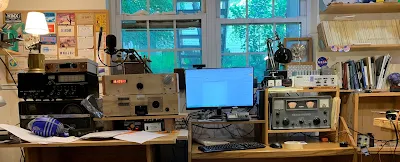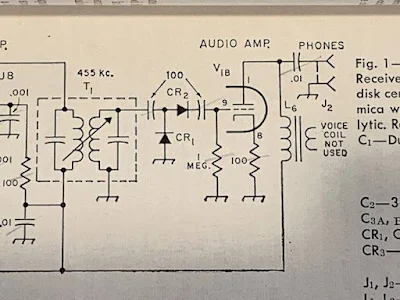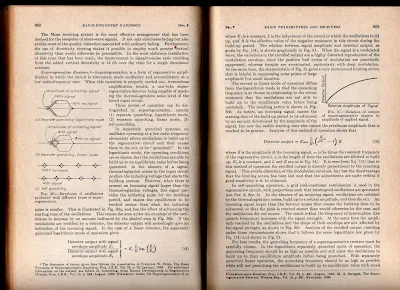Video Version: https://www.youtube.com/watch?v=RslKbpBuYDI
Audio Version: http://soldersmoke.com/soldersmoke259.mp3
Reports of FCC action against Direct Conversion receivers. Outrageous! They are going to prosecute Dean and Bill. The 85th harmonic was apparently interfereing with Starlink satellites over Melbourne Australia, Bali, New Zealand's North Island, the UK, Sweden, Holland and Argentina. Who knew?
Here's the question: How many paragraphs of this post did you read before you realized this was an April 1 thing? C'mon, please let us know. Bill falls for one or two every year. This year he believed that Warren Buffet really had bought Tesla. So, don't feel alone. Fess up.
Travelogue: Pete's trip to Los Olivos. DMV Real ID Blues. Going back to San Francisco? Pete, we have some new stickers...
Pete's Bench: MHST progress. Raspberry Pi. VWS. Transceiver. K7TFC's Mouse Knob.
Dean and Bill update on the SolderSmoke Direct Conversion Challenge: 56 receivers built. And 56 is a lot! Info and especially Dean's videos are still up on the Discord server and on YouTube. Not to late to build! All builders should try to encourage at least one other person to build this receiver. In this way, builders become Elmers and homebrewing can spread. Others have already done this -- you can do it too! W4KAC built a second one for a friend. WZ5M built one, helped a friend do a second, and a third one may be on the way. MakeIt Labs in Nashua, NH is responsible for 4 DC receivers. See all the completed receivers here:
https://soldersmoke.blogspot.com/search/label/DC%20RX%20Hall%20of%20Fame
Once you have the receiver going, start the mods! Front panels! Antennas! Better tuning! Si5351s! DSB transmitters! Tell us about your mods.
SHAMELESS COMMERCE DIVISION: Become a Patreon Sponsor! MostlyDIYRF. Buy Amazon stuff through the Amazon link on our blog site. Subscribe to our video YouTube channel.
Dean's Bench: SDR Receiver project. 20 meter Mythbuster build (a thing of beauty). Homebrew Frequency Counter. Balloons!
Bill's Bench: Suburban renewal. New floor, new paint, got rid of a lot of junk. New operating table from Husky. DX-60, DX-40, VF-1, and maybe even the Lafayette HA-600A receiver have to go. Many books and magazines too. Lightening the load! But keeping the DX-100, HQ-100, HT-37 and, of course, the Drake 2-B. Boatanchors station. Beacon operations.
Bought a new DJI Drone, but will use it in the Dominican Republic (not here!). And I got my Drone TRUST Certificate.
Mailbag:
Dave W2DAB doing Manhattan building on the island of Manhattan!
Rich K2GJ (ex WA0CGM) -- Nice ham radio memories of his HT-37. Thanks Rich.
Wes W4JYK -- A VWS DC receiver.
A nice note from Farhan VU2ESE.
Todd K7TFC -- Simple vs. Complex
Paul WA1MAC Gluestick 80 meter QRP
Armand WA1UQO Regen receiver highlighted by AA7EE
Dave AA7EE -- FIGHT BACK AGAINST THE FCC! Build the DC Receiver!
Rogier PA1ZZ Many great videos, including one on Heathkit
Bruce KC1FSZ -- Nominated us for ARRL award. Thanks Bruce.
Bob KD4EBM-- Looking into Polar Modulation. https://qrp-labs.com/qmxp/ssbbeta.html
Peter VK2EMU -- Thought of Peter when I briefly took down the N2CQR sign he made.
Victor HI7S -- 46 km away from my place in the DR. Says I won the lottery... He is right.
Jim KI4THC Got his Extra ticket. Congratulations Jim.
Kirk NT0Z -- On Kits, Hombrew, and the influence of Russian Homebrewers.
Were Russian spies taught how to homebrew their own spy radios?
































































